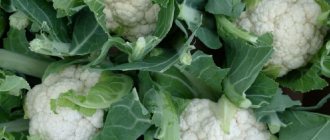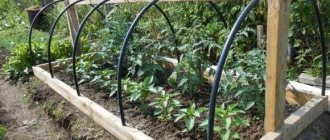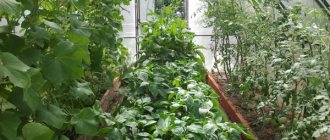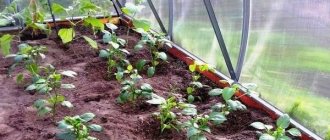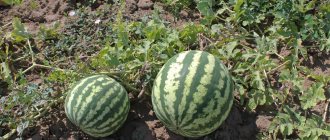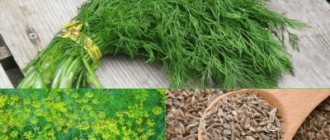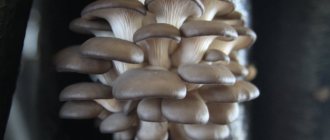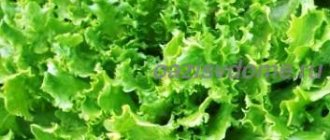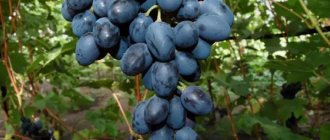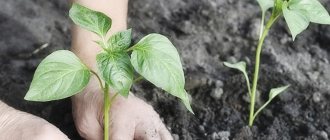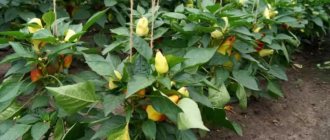In order to grow a good harvest of sweet or hot peppers, you do not need to spend day and night in a greenhouse or garden. It is important to know some features of care, which we will talk about today.
Pepper is a plant whose origins are extremely confusing. The first mention of him, written in Sanskrit, was found in India. But South America is considered the birthplace of pepper. Today, pepper has settled in almost all corners of the planet and, depending on where it grows, more closely resembles a grass, shrub or vine. In our latitudes, sweet peppers, often called “bulgarian”, and hot capsicums are cultivated. In order for the plant to feel comfortable, it requires good lighting, high humidity and abundant watering.
Peculiarities
The yield indicator is most often determined by the quality of the seeds. You can purchase them in the store or collect them yourself from fully ripened peppers.
Important! To obtain planting material, it is permissible to use only varietal peppers, since hybrids lose their maternal characteristics when re-sowed.
Rules for growing seedlings
When cultivating pepper seedlings, you should adhere to several recommendations.
Compliance with sowing deadlines
Pepper is characterized by a long growing season. In the middle zone, seedlings are planted in closed ground approximately 90 days after emergence (early June), and after 1-2 months the harvest ripens. In this case, February or early March is preferable for sowing seeds.
In regions with a mild climate, late-ripening varieties and hybrids are sown in early February, and mid-season and early varieties of peppers are sown at the end of this month.
Pre-sowing activities
Preparation of seed material before sowing includes several procedures:
- calibration and rejection of seeds;
- hardening;
- processing for the purpose of disinfection;
- fertilizing with a bioregulator to improve germination;
- germination.
Preparing the soil and container
Land for growing seedlings can be purchased in a store or prepared independently; in the latter case, subsequent processing is required, carried out in one of the following ways:
- refrigeration (from -15°C) for approximately 1 week;
- steaming;
- disinfection using chemicals.
Important! To sow pepper seeds, it is recommended to use boxes made of wood or plastic, since peat containers give an acidic reaction that inhibits plant growth.
Sowing seeds and further care
The sowing procedure is carried out as follows:
- preparing small grooves or pits with a depth of 1.5 cm and an interval of 2 cm between them;
- watering the resulting depressions;
- laying out seeds and then covering them with soil;
- hydration;
- covering with film or glass.
Features of caring for seedlings
To ensure full development of seedlings before picking, the following conditions are created:
- daytime temperature – from +26 to +28°C , at night – from +20 to +24°C , while for hybrid varieties it is recommended to raise it by about 3°C higher;
- good lighting for at least 15 hours a day , if necessary, organize additional lighting;
- moderate watering.
Picking
The procedure is carried out after the seedlings have formed 2-3 full-fledged leaves, usually this occurs on the 14-20th day from the moment of their appearance.
Important! Young plants with 5-6 leaves have a more developed root system, which is easily damaged during transplantation.
As a rule, cardboard or plastic cups with pre-made holes for drainage are used for picking.
Feeding and protection against diseases
During the growing process, pepper seedlings are fed twice:
- when the second pair of leaves is formed;
- a week before transplanting into open or closed ground.
To prevent harmful insects, the plant is treated with a fungicide solution once every 2 weeks.
Hardening
14-20 days before transplanting into the ground, the seedlings are hardened by taking them to a cool place with a temperature of +12+15°C . Initially, the duration of the procedure is 1 hour, then it is gradually increased.
Agricultural technology for sowing seeds for seedlings
Sowing begins 50-60 days before planting the bushes in a permanent place. The substrate used is loose, air- and water-permeable. You can prepare it yourself from the following ingredients:
- turf land;
- peat;
- sand.
The soil is calcined, and boxes with low sides are filled ¾ full with it. Individual containers can be used. The seeds are placed on the surface of the soil, sprayed with water from a spray bottle, covered with substrate to a height of 0.5 centimeters, and lightly compacted. The containers are covered with film and placed at home in a warm place.
Planting peppers in open or closed ground
In order not to damage or destroy the grown seedlings when transplanting into the ground, it is necessary to carry out the manipulation at the right time, while observing all agrotechnical rules and recommendations.
Suitable timing
As a rule, peppers are planted indoors in late April or early May. In turn, the time for transplanting into open ground is determined by the climatic characteristics of a particular region. To do this, the weather must be warm and the likelihood of return frosts must be minimized.
In different regions
Optimal timing for planting activities depending on climatic conditions:
In the middle zone:
- in open ground - late May/early June;
- in a polycarbonate greenhouse - early May;
- in a heated greenhouse - from mid to late April;
- in a film greenhouse (polyethylene greenhouse) - the second half of May.
In the Urals, Siberia, Leningrad region:
- in open ground - the first ten days of June;
- in a polycarbonate greenhouse - mid-May;
- in a heated greenhouse - in early May;
- in a film greenhouse (polyethylene greenhouse) - at the end of May.
On South:
- in open ground - end of April;
- in a polycarbonate greenhouse - mid-April;
- in a heated greenhouse - late March/early April;
- in a film greenhouse (polyethylene greenhouse) - the second ten days of April.
According to the lunar calendar 2022
When planting pepper seedlings, it is recommended to follow the lunar calendar. The following are considered favorable days for planting pepper seedlings in 2022:
- January – 7, 8, 9, 16, 17, 21, 22, 26, 27;
- February – 4, 5, 13, 14, 17, 18, 19, 22, 23, 24;
- March – 3, 4, 17, 18, 22, 23, 30, 31;
- April – 8, 9, 14, 18, 19, 28.
Unfavorable days:
- January – 12, 13, 14, 28;
- February – 10, 11, 12, 27;
- March – 12, 13, 14, 28;
- April – 11, 12, 13, 27.
Important! It is permissible to plant peppers in a greenhouse 10-14 days earlier than in open ground due to the higher temperature and rapid warming of the soil.
Selecting a location
To obtain an abundant and high-quality harvest, it is necessary to grow vegetables in the most comfortable conditions. Therefore, choosing a place to plant pepper seedlings requires a responsible approach.
Important! One of the main requirements for a greenhouse and open ground area is high-quality lighting throughout the day .
It is recommended to give preference to areas located on a southern slope: well-warmed and protected from drafts and strong winds. Pepper develops well on breathable, nutrient-enriched soil, while clay and sandy soil types are absolutely not suitable for this purpose.
Growing and care
Activities related to caring for bell or hot pepper seedlings after planting in the ground include watering followed by loosening, creating protection from frost and scorching sunlight, fertilizing and weeding.
Methods of protection against return frosts
In order to enhance frost resistance, planted plants are treated with solutions of humic fertilizers or microelements. In case of a serious threat, more effective measures are taken:
- smoking the area using sawdust, damp firewood, plant waste, pine needles or peat;
- sprinkling - 2 norms of water are poured under the root of each plant, the procedure is carried out in the daytime;
- creating additional shelter using special material, plastic film, moss, reeds, straw or reusable plastic bottles.
In greenhouses, containers with hot water, potbelly stoves, or electric heaters (if there are electrical networks) are used to warm seedlings.
Watering
Peppers do not need frequent watering . The plant is watered for the first time during the planting process, and then after 5 days. Subsequently, the event is held once every 7 days. Recommended dosage – 1 l/1 bush.
Important! When moistening the soil during the flowering period, it is necessary to use water with a temperature of about 20 ° C.
After each manipulation, the soil near the bushes is loosened, preventing the formation of a crust. In open ground, peppers are mulched, which allows them to retain moisture for as long as possible.
Top dressing
no more than 3 times during the season .
Features of the cultivation of bitter pepper
Growing hot peppers requires following several rules:
- moistening the soil 2 times a week;
- ensuring air temperature: during the day +25+30°C, at night – +13+16°C;
- maintaining humidity in the range of 60-70%;
- decrease in temperature as the seedlings grow: at night to +10°C, during the day from +20 to +27°C.
In order to protect against pests, hot peppers are disinfected step by step:
- after the first shoots appear;
- when two sheets are formed;
- when forming each new leaf.
The nuances of growing peppers in different regions
early and mid-ripening varieties in open ground . However, due to the likelihood of return frosts, these plantings need shelter.
In the northern regions, growing pepper is possible only in warm beds or in greenhouse conditions . For sowing in Siberia, the Urals and the Far East, varieties are selected that are zoned for these areas.
Important! Since summer in the northern regions is quite short, at the end of July it is recommended to remove small ovaries and flowers, as well as pinch the top of the main shoot; this technique will allow the peppers to ripen before the onset of cold weather.
Non-standard methods
In addition to the traditional method, you can cultivate bell peppers as follows:
- In barrels , the bottom of the container is removed, drainage holes are formed and filled with soil, alternating raw materials for compost with ordinary turf. The lower leaves of the planted bush are torn off and covered with soil (10 cm layer), then covered with film. As the pepper grows, the procedure is repeated. As a result, the barrel is gradually filled with soil to the brim. From this point on, the film is removed, and the crop is cared for in the same way as with traditional cultivation.
- The Chinese method - the seeds are sown in cassettes and covered with a layer of soil up to 6 cm thick. After the formation of the seventh full-fledged leaf, the tops are pinched, which is why the growth of the bushes slows down, and all the plant’s forces are spent on the formation of the root system.
Important! Despite the later ripening of fruits, the yield when grown using Chinese technology is much higher.
Cultivating ornamental peppers at home
Caring for decorative peppers follows almost the same principle as caring for indoor flowers. A suitable place for the plant is window sills facing west or east: additional lighting will be needed here only in autumn or spring.
The room is periodically ventilated, avoiding the slightest drafts. Optimal temperature: during the day +23+25°С , at night – several degrees lower. The level of air and soil humidity should vary in the range of 60-70% ; at lower levels, the crop is sprayed with water.
Important! In the warm season, containers with pepper are moved to the balcony or placed outside (if possible); when the temperature drops, they are returned to their original place.
Watering is done moderately so that the soil is constantly slightly moist. Every 14 days, peppers are fed with compounds containing nitrogen.
To increase productivity and give the bush a decorative appearance, the main shoot of the plant is pinched immediately after the first flower appears on it, thereby stimulating branching. As they grow, shoots that interfere with their decorative properties are removed, and branches of perennials that will no longer bear fruit are cut off.
During long-term cultivation in winter, the plant is provided with additional lighting, the soil is moderately moistened, loosened, and fertilized from time to time. Fungicides are used to control pests, and preparations containing copper are used to combat diseases.
Features of growing black peppercorns
Due to its excessive heat-loving nature, cultivation of this plant in open ground is impossible even in the southern territories of the country. If the temperature drops below +10°C , the crop dies.
To grow at home, you can use regular spice from the store with a suitable shelf life: up to 1 year from the date of collection. The optimal time for planting is May or June. Black pepper is usually planted in orchid soil.
During the growth process, as the soil dries out, watering is carried out, and during the growing season, mineral fertilizers are applied twice. The plant is replanted 2 times a year, and its length is adjusted by pruning. The first fruits appear only in the 2nd or 3rd year .
Important! Small whitish drops that appear on the inside of a plant leaf are normal and do not indicate the occurrence of any disease.
Soil preparation
When growing peppers, it is very important to properly prepare the soil so that it is sufficiently loose. This is all because pepper does not tolerate dense soil with a lack of oxygen. Preparation begins with peeling after harvesting the predecessor to a depth of 4-6 cm. But if the field is clogged with perennial rhizomatous weeds, then the depth should be increased to 10-12 cm. Then harrowing is carried out to a depth of 25-26 cm.
For autumn application, it is better to use simple fertilizers that dissolve well. Fertilizer application rates are calculated after conducting an agrochemical soil analysis. Based on its results, you can find out the content of macro- and microelements in the soil and, having specified the potential yield, calculate how much fertilizer needs to be applied per hectare.
Based on the results of the analysis, 20% of nitrogen, 80% of phosphorus and 50% of potassium from the total norm are added in the fall. The forms and types of fertilizers will depend on the type of soil and its acidity. It is also very important to take care of a sufficient amount of calcium in the soil, since its deficiency can lead to blossom end rot.
Do not forget about organic matter, which is added in the form of humus at a rate of 60-80 t/ha for autumn cultivation. The applied fertilizers are embedded in the soil to a depth of 15-30 cm.
In the spring, cultivation is carried out to a depth of 12-14 cm after preliminary application of herbicides.
Disease and pest control
Like all members of the Solanaceae family, peppers can be affected by the following diseases:
- Gray rot. For treatment use: Skor, Fundazol, Ordan, Acrobat. Processing rules are described in the instructions for each drug.
- Bacterial wilt. In this case, in the early stages the pepper is treated with fungicides, and in the later stages it is destroyed.
- Late blight. For partial damage, use Ridomil Gold, Alirin-B, Gamair, for massive damage - Quadris or Bravo.
- Fusarium. Pepper is sprayed with Topsin-M or Fundazol.
- Mosaic disease. There are no cures for this disease. In order to prevent it during the growing process, all rules of agricultural technology are strictly adhered to.
Among the pests, bell peppers are attacked by slugs, spider mites and aphids . These insects are controlled using insecticides and acaricides.
Arrangement of beds
Before growing bell peppers, carefully prepare the area.
In the fall, the soil is dug up and nutrients are added. You can use manure, humus, compost. Fertilizer is applied before digging at the rate of 4-5 kg per m².
In the spring, a mixture of superphosphate, potassium sulfate, and urea is used. In order for the sun to better warm the planting bed, it can be raised by covering it with boards.
A bed with plants can be covered with boards
Advice from experienced gardeners
To get a bountiful harvest of quality peppers, take into account several recommendations:
- strictly adhere to sowing dates;
- sow only sprouted seeds;
- use large containers for planting, since the crop does not tolerate excessive density;
- maintain the required depth;
- follow the watering and fertilizing regime, as well as other agrotechnical rules.
The best varieties of sweet bell peppers
Sweet peppers vary in fruit color, ripening time, varieties and hybrids (F1).
The best varieties of bell peppers for growing in open ground and greenhouses are as follows:
- California miracle pepper - ripening period 129 days from the moment of germination, fruit weight 128 g, red color, cuboid shape, yield up to 5 kg/m2. Rich taste and aroma, resistance to tobacco mosaic.
- Bogatyr - ripening 131 days, height 70 cm, weight 100 g, cone-shaped, red color, yield 4.3 kg/m2. Excellent taste, versatility in use, good immunity to blossom end rot.
- Swallow – ripening 130 days, height 60 cm, weight 84 g, color red, cone-shaped. Productivity 4.7 kg/m2, resistance to bacterial wilt.
- Ox Ear – ripening 130 days, height 70 cm, weight 100 g, red color, cone-shaped, yield 3.2 kg/m2. Ability for long-term storage, transportability, immunity to fusarium.
- Hercules - ripening 145 days, weight 160 g, red color, cuboid shape, yield 2.6 kg/m2. Versatility of use, resistance to fusarium.
- Cockatoo F1 – ripening 135 days, height 1.5 m, weight 500 g, elongated cylindrical shape. The color is bright red, the yield is 10 kg/m2, sweet taste, rich aroma.
- Big Mama - ripening 115 days, height 50 cm, weight 200 g, cylindrical shape, orange color. Productivity 8 kg/m2, resistance to low temperatures, lack of light and major diseases. Ability to bear fruit before the first frost.
- Golden Miracle - ripening 130 days, weight 185 g, yield 2.6 kg/m2, dark yellow color, resistance to fusarium, cold resistance.
- Gemini F1 is a mid-early hybrid, weight 250 g, yellow color, yield 5 kg/m2.
- Orange miracle F1 – ripening 100 days, weight 220 g, high taste and commercial qualities, yield 12 kg/m2, orange color.
The best varieties of bitter (hot) peppers
When choosing a hot pepper variety, take into account the conditions in which it is planned to be cultivated, the desired characteristics of the future harvest and personal taste preferences.
Breeders have developed more than 3 thousand varieties of this crop with varying degrees of pungency of taste, determined by the climate. Peppers grown in cool conditions produce less hot fruit than representatives of the same variety grown at higher temperatures and humidity.
Important! Red-colored capsicums have a sharper taste than green-colored fruits.
Of the wide range of hot pepper varieties, gardeners prefer the following:
- Hot pepper Double abundance - early ripening, weight 80 g, high yield (up to 40 fruits ripen on one copy). Resistance to high temperatures and viral diseases.
- Burning bouquet - early ripening, height 50 cm, weight 25 g, bright red color, does not require garter, combination of pungent taste with peppery aroma.
- Chinese fire - early ripening, maximum bitter taste, height 65 cm, weight 70 g, bright red color, high transportability, resistance to major diseases.
- Adjika – early ripening, height 1.5 m, weight 90 g, thick, fleshy pulp, bright red color, very pungent taste.
- Astrakhan 147 – medium ripening, high yield (2.8/m2), height 65 cm, weight 10 g, red color, very pungent taste, long fruiting period.
- Ram's horn - medium ripening (5 months), height 1.5 m, weight 40 g, red color, medium-sharp taste, fruit length up to 20 cm.
- Dragon tongue - medium ripening, height 1 m, weight 18 g, yield 3 kg/m2, pods thick-walled, elongated, rich red color.
- Vizier – late ripening, weight 20 g, slightly pungent taste, yield 3.8 kg/m2, bell-shaped.
- Tabasco – late ripening, height 150 cm, high yield, medium pungency, resistance to major pepper diseases.
- Jati Jolokia – growing season 130 days, height 40 cm, red color, high pungency.
Of the new products for 2022, the TOP 5 best varieties include the following:
- Pepper Kolpak Parsley - mid-ripening (112 days), maximum sharpness (up to 250 thousand units), height 1 m, weight 15 g, bright orange color, easy care.
- Flame - mid-early ripening, height 50 cm, weight 70 g, fruit length 20 cm, thick skin, spicy aroma, good immunity to verticillium, moderate pungency.
- Russian size F1 – mid-ripening, height 1 m, dark red color, fruit length 25 cm, resistance to temperature changes and viral diseases, moderate pungency.
- Bellflower - growing season 150 days, height 2 m, weight 75 g, red color, pronounced citrus aroma, piquant taste.
- Hungarian yellow - short stature, weight 60 g, red color, medium sharpness, easy to care for, disease resistance.
Important! When choosing a variety, you need to take into account that spicy varieties have shorter ripening periods.
In the southern regions, it is recommended to grow late-ripening varieties with thick skin and a ripening period of 150 days.
In the central and northern territories, it is advisable to cultivate early varieties .
with an average ripening period are most suitable .
About covering material
My American ribbed tomatoes also grow under cover material. I recommend everyone to grow this variety: its sweet, fleshy and tasty fruits weigh one and a half kilograms.
If you live in a very hot climate, covering material saves plants from overheating the root system. Peppers grow well under it and will bear fruit until the first frost.
The plants under the covering material develop well and are not affected by late blight and other diseases, although I did not treat the bushes with anything. True, there was little rain this year, so we avoided late blight.
On the other hand, without rain it’s also bad: you have to water the garden all the time. However, it’s a sin to complain: there are no ideal conditions, so you need to strive to create them yourself.
All the best.
